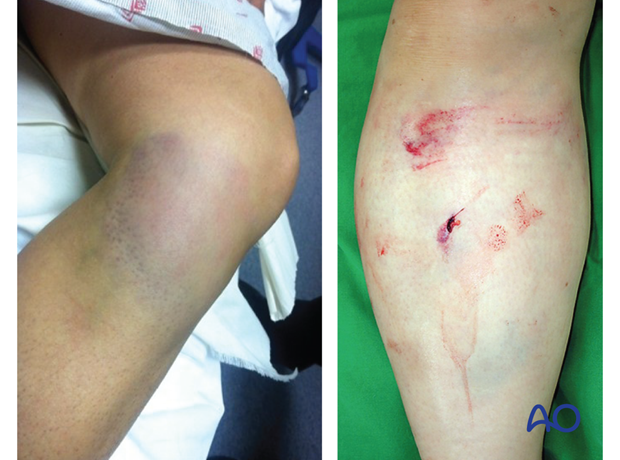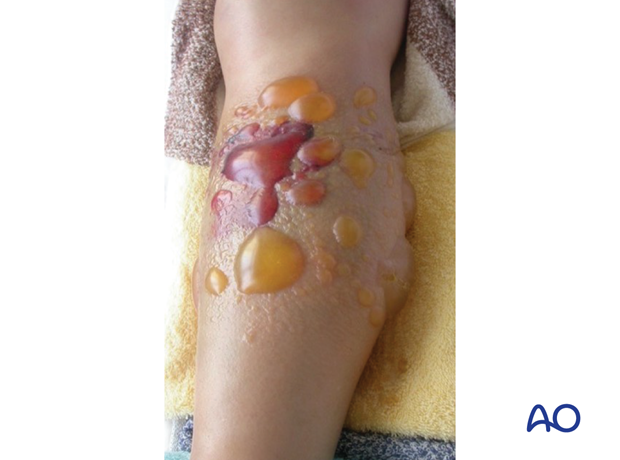Clinical evaluation
1. General considerations
Proximal tibial injuries in children often result from falls (younger children) or sports injuries (older children).
The pattern depends on the age of the child and mechanism of injury.
Single bone and greenstick fractures usually result from low-energy trauma, while fractures involving both bones with increasing fragmentation are generally caused by greater force.
Clinical suspicion of an evolving compartment syndrome is a surgical emergency.
Nonaccidental/unexplained injuries should be ruled out, especially in the nonwalking child.
2. Patient assessment
Symptoms and signs
The main symptom is pain below the knee and an inability to weight bear.
The signs include:
- Swelling/bruising
- Tenderness
- Deformity
Physical examination
Evaluate:
- Local deformity and malalignment
- Swelling around the upper tibia and knee
- Hemarthrosis, which may be due to an intraarticular injury
- Bruising
- Skin involvement
- Localized bone tenderness
- Distal pulses and signs of evolving ischemia, particularly after a high-energy mechanism and significantly displaced fractures. Examination must be repeated after any temporary or definitive reduction
- Ability to move the knee actively and passively (with care)
Check for signs of compartment syndrome.
Check for injuries at other sites, especially in high-energy trauma, using standard assessment algorithms (ATLS).

3. Soft-tissue conditions
High-energy injuries may be associated with open wounds, excessive swelling, and blistering which may require external fixation and delayed soft-tissue reconstruction.














